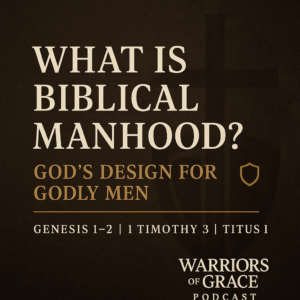⏱️ Estimated Reading Time: 5 min read
Every couple of months someone identified with conservative evangelicalism feels it is their duty to exercise their theological machismo by deliberately contradicting the plain reading for Genesis 1. Today, it has been the turn of Justin Taylor, of The Gospel Coalition. In an article entitled “Biblical Reasons to Doubt the Creation Days Were 24-Hour Periods”1, he claims that the text does not actually describe the creation days as literal 24-hour days.
Justin Taylor is determined directly to contradict what people like me say about Genesis 1.
Contrary to what is often implied or claimed by young-earth creationists, the Bible nowhere directly teaches the age of the earth.
Now, I have explained before why I am not a fan of the term “young-earth creationist”, because I can only be described as a young-earther by contrasting my views with an unbiblical deep-time worldview2. I consider the term “young-earther” to belong to an incorrect presupposition. Therefore, you would expect me, as a biblical presuppositionalist, to take the position that the Bible does indeed directly teach that the creation days were literal 24-hour days. The issue is actually one of hermeneutics – and, in particular, not interpreting one passage of Scripture so that it would contradict another. My book, The Six Days of Genesis3, contains more information on this subject, but, in brief, we should look at how the Hebrew word for day – yom – is used. In fact, yom is very similar in use to the English word, and it can mean a 24-hour period, or the hours of daylight, or a period of time. The context of the word tells us clearly what it means in each place. And of the 2,301 occasions in which the word yom appears in the Old Testament, it is only in Genesis 1 that people have any problem with what it actually means. So, it is worth looking at how the word yom is used elsewhere in the Old Testament.
For example, have you read Numbers 7 recently? It is one of those boring sections that you would rather skip over in your Bible reading plan, forgetting what 2 Timothy 3:16 says! Well, in Numbers 7, the tribes of Israel bring their gifts for the Tabernacle to Moses. In Numbers 7:12, we read that the tribe of Judah brought their offering on the first day. On the second day, the tribe of Issachar came (Numbers 7:18. Zebulun brought their offering on the third day (Numbers 7:24). Since a day with the Lord is as a thousand years (2 Peter 3:8), was poor old Moses sat there for 12,000 years, waiting for these offerings? Of course not! These were 12 literal 24-hour days. And the grammar of Numbers 7 is identical to that of Genesis 1. In fact, outside of Genesis 1, there is not a single example of the word yom being used with a number, where it does not mean a 24 hour day4. So, there is no reason to interpret Genesis 1 in any other way than to state that it refers to 24-hour days.
In his article, Justin Taylor claims five reasons for saying that the Genesis text does not require actual 24-hour days. I will now use his headings, and answer each point.
Genesis 1:1 describes the actual act of creation out of nothing and is not a title or a summary
The reason for this distinction is so that he can claim that the creation of the universe out of nothing was not part of the biblical six days of creation. Justin Taylor rightly points out that the phrase “heaven and earth” is a merism – i.e. a figure of speech, referencing totality, and in this case referring to the universe as a whole. (English examples of merisms include “I searched high and low”, which, if you lived in a house with three floors, would not imply that you didn’t search the middle floor). However, the fact that “heaven and earth” refers merismically to the universe does not help his case. He brushes off the fact that Exodus 20:11 makes clear that God’s creation of the heavens and earth took place within the six days of creation. Moreover, he attempts to use Joel 3:15-16 to claim that the heavens “encompasses the sun, the moon, and the stars”. On the contrary – it is the merism “heavens and earth” which includes the sun, moon and stars, but this does not imply that those bodies existed in Genesis 1:1, because that chapter is about incomplete creation. God made the universe in stages, so that He could set the weekly pattern for us to use.
Justin Taylor uses a table to illustrate the well-used formula that there is a parallel in the six days of creation, showing that these cannot be real days. He links day 1 with day 4, day 2 with day 5 and day 3 with day 6. However, this linkage is not perfect. For example, God made the firmament of space, and stretched it out, between the waters above and below, on day 2, so this should be a parallel to day 4, cutting across this neat hypothesis.
Continue Reading


